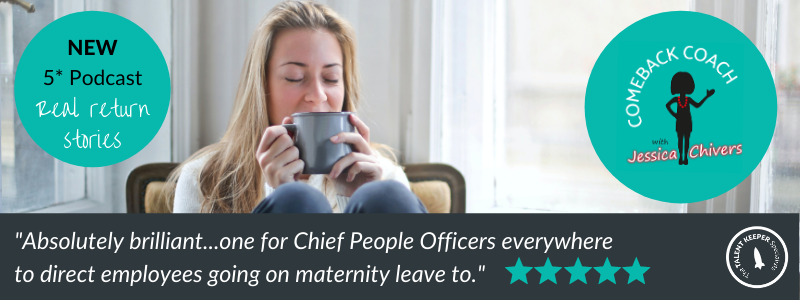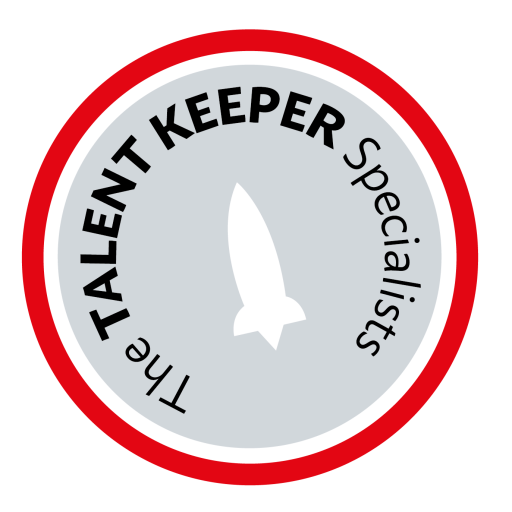Out of sight, out of mind? 14 ways to boost your visibility when you return, remotely

Returning to work after long leave feels like riding a rollercoaster. It’s seat of the pants ride through excitement, euphoria and at times, sheer panic. Throw in the opportunity to drink a cup of tea while it’s still hot and well, you’re riding a wave of joy once more.
In normal times, you would literally dress as your professional persona to leave the house and show up day after day in the office, reminding everyone that you have returned stronger and more driven than ever. But sitting at home, with work/life boundaries unquestionably blurred, it can feel like wading through toffee. Imposter syndrome, fuelled by a sense of disconnection, threatens to rob the thrill from your return.
Why is is important to raise your visibility after leave?
You want to return to the workplace with impact. While you have been away from the office, other employees have encroached on your specialist subjects and forged new bonds. You still want to land those juicy projects? Get yourself back into the centre of the action. Enhance the perception that you are a brilliant leader while being one. Build relationships with co-workers that become even stronger than before you left.
The great news? Now is the perfect time to rebuild your brand in a way that feels authentic and can be sustained long-term.
Don’t fall into the productivity trap
There are ways to ensure that you are recognised for your achievements and remembered for the exciting projects coming down the pipeline. It’s easy to fall into the trap that makes you feel you have to prove your worth by working even more. Instead, make sure that what you are doing has maximum impact on the people that matter.
Here are my top ways to increase your visibility at work after long leave. As you read this, consider the Pareto Principle. Take on board only the things that will add value to your personal brand, in the workplace you operate in.

1. How to make video calls work for you
Prioritise video calls for your first few months back. We’re all struggling with video calling fatigue but now’s the time to embrace it. Making those eye-to-eye connections is key in the early months of your return. Arrange virtual 1:1 calls, lunch dates and coffees with a wide range of contacts and stakeholders.
2. Go into listening mode
People always tell me that they are worried about what to say in these first meetings. They are consumed by what they have to say or to offer. But you can take charge of that by simply saying, “I’m reaching out to a whole range of people now that I’m back from leave. I’d love some time with you to talk about xx. This is a time for me to be a sponge, I just want to soak up all the information. So if you don’t mind, I’m going to be really quiet and listen.”
3. Pick your targets
Be really strategic about who you want to get in touch with. This is a brilliant opportunity to draw up a list of people who will make your return to work both more comfortable and more successful. Don’t be shy of picking people who may well play a hand in your career progression further down the line.
4. Plan three outcomes
Think ahead of your meetings and work out three things. What do you want this person to go away thinking about you, feeling about you and possibly even doing for you? If you’d like them to introduce you to someone else, don’t leave your meeting without asking.
5. Share a short film
I’m not suggesting you spend time creating something worthy of a premiere at Cannes. But consider creating short films of the work you and your team has accomplished. Sharing these via email or on the company messaging app is a new way to demonstrate the value of what you are achieving without the cringe-factor. A brilliant free video making app is InShot. It’s intuitive and you can create something to circulate among your senior leadership team in minutes. Just make sure your name is on it!
6. Bring new energy through alternative meetings
Create new cross-department or cross-functional team meetings. You’re probably thinking that no-one wants MORE meetings in their lives. But if you set up a multi-division brainstorming session, you’ll find that people are energised by the fresh approaches brought to the table by this new, diverse group. People will thank you for it!
7. We are human beings not just human doings
Be yourself on your company’s direct messaging app. Remember, you don’t always have to be serious to achieve serious things. In ‘real life’, you’d be sharing your tantalising twist on a Cosmopolitan or anecdotes about your neighbour’s cat. Inject a little humanity into your interactions with colleagues online. This kind of rapport-building pays dividends. Just don’t forget to balance it out with a respectable daily dose of quality information sharing.

8. Pat someone else on the back
Share other people’s wins. This way you can raise your profile without sounding like you are showing off. You are spreading good will and raising confidence at the same time. Share stories about how people on your team have overcome issues or learned new ways of approaching old problems. You’ll be demonstrating both your leadership and training skills as a by-product of the message.
9. Communicate your wins AND failures
Describing how much you’re learning from failures is as important as notching up the big wins. Don’t feel that just because you are online, you should only talk about the good stuff. Sharing both your wins and failures gives your line manager an opportunity to see how you are developing in your role. Forward your wins to your mentor, too – you’ll brighten their day and remind them of your existence.
10. The Fri-yay update
Compile a weekly update of big wins, learnings and accomplishments that you and your team have achieved and send it around senior managers. It’s a great tool for you to celebrate your own successes as well as for others to recognise them.
11. Aim high for help
Ask your line manager or mentor for help. Tell them that you are aiming to increase your visibility now that you’ve returned and ask if they can help you with this. Don’t ask, don’t get, right?
12. Volunteer on high-visibility projects
I’m going to be blunt here: there’s no point in volunteering your time for projects that no-one cares about, regardless of how strongly you feel about it. Not at this point in your career. Pick projects which will mean you are in front people from across the business. You’ll become known for being knowledgeable, approachable and dynamic.
13. When you are ready to go to the office, do!
… and don’t spend the day on your laptop. Schedule in as many face-to-face meetings, coffees and catch ups as you can manage. This is your moment to make a physical impact, so make it count.
14. Be transparent and reasonable to yourself
Setting clear expectations with colleagues and clients will mean you can keep a handle on your boundaries. It is a fair way to proceed with both yourself and them. Being transparent with your schedule, deadlines and response times is easy to do. Simply set it out in your calendar, your voicemail, in your email sign-off and out of office notifications. Having boundaries isn’t a sign of weakness or being unprofessional – it’s the only way we can all operate in today’s more flexible world. We at TKKS welcome that!
Let us know how you get on. E-mail jc@talentkeepers.co.uk or find us on Twitter and Instagram @talentkeepersuk.

Listen up: Comeback Coach is my new wobbly-bottomed podcast about kick-ass comebacks! It’s an inspiring, accessible peek inside the lives of mothers who have overcome the stress and apprehension that goes with taking long leave and replaced it with motivation, engagement and confidence on their return. Join us!


